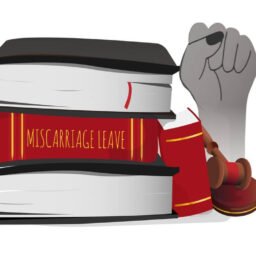INTRODUCTION
The Indian Ministry of Civil Aviation (MoCA) has issued the final Unmanned Aircraft System Rules, 2021 (“UAS Rules”), which follow the draft rules on automated airplane frameworks (“UAS”(Unmanned Aircraft System)/ “Drones”) that were posted for public comment in June 2020 (“Draft UAS Rules”). This makes room for India’s new drone law, overriding the earlier Drone Regulations of December 2018 (“Earlier Guidelines”). Some of the important characteristics of the Unmanned Aircraft Rules, which will currently oversee the common utilization of drones in India, are discussed in this article.
Regardless of whether it’s how fights are battled, business tasks, or every day exercises, technological improvements have impacted our lives in a variety of ways. Unmanned Aerial Vehicles (UAVs), Unmanned Aircraft Systems (UASs), and Remotely Piloted Aircraft Systems (RPAS) are all terms used to describe drones. Drones are employed by the Indian military for a variety of purposes, counting following foe developments, line watches, search and salvage missions, and crisis administrations.
The previous restrictions were solely applicable within India’s boundaries, while the new UAS Rules apply to all UAS registered in India, even if they are flying outside of the country. Its regulations would likewise apply to anybody wishing to acquire or then again have a UAS in India, as well as anybody wishing to take part in bringing in, sending out, producing, exchanging, renting, and working, moving, or keeping up one.
ORDER AND CLASSIFICATION OF UAS
While the previous Guidelines only applied to RPAS, the UAS Rules divide UAS into three categories: aeroplanes, rotorcraft, also, hybrid automated airplane systems. These orders are further divided into the following subcategories:
- RPAS i.e., UAS piloted from a remote pilot station
- Model RPAS is a type of UAS working without payload and utilized for instructive purposes just inside visual view
- Autonomous UAS is a type of unmanned aircraft that can fly without being administered by pilot mediation.
Furthermore, the classification of UAS under the UAS Rules is similar to that under the Earlier Guidelines (i.e., weight-based classification), with the exception of the introduction of a reclassification norm for Nano Drones into Micro Drones if the Nano Drone surpasses the specified presentation boundaries dependent on greatest speed (i.e., 15 m/s); or (ii) stature (i.e., 15 meters) and reach feasible (i.e., 100 meters) from the distant pilot (i.e., execution based arrangement).
Previously, Nano Drones were free from all regulatory requirements. However, they will be controlled in the future (with some exceptions), and manufacturers may be required to include geo fence capabilities to confine operations to the stated speed, height, and range limits in order to avoid being classed as Micro Drones (which would trigger extra compliances). Nano Drone regulation, coupled with the renaming, is expected to have an impact on the present drone ecosystem, posing a challenge for manufacturers and operators.
AUTHORIZATION AND ELIGIBILITY
As against the past framework where the heads, creators and transporters of UAS were expected to get fundamental licenses and supports, going ahead, the UAS Rules will require all people related with the Drone environment to embrace an enrolment in the limit of an approved UAS Importer, approved UAS Manufacturer, approved UAS Trader, approved UAS Owner or approved UAS Operator (together as “Approved Person”), by making an application to the Directorate General of Civil Aviation (“DGCA”) through Form UA-1 and as per the conditions recommended under Rule 6 of the UAS Rules. The draft UAS Rules had recommended implementation to be documented through the computerized sky stage, yet the stage discovers no reference in the UAS Rules. All things considered, there are references to an “online stage” just corresponding to consent to fly, as point by point beneath. It is at present hazy if all implementations will be made on the web, as conceived under the draft UAS Rules, or if actual applications can likewise be made.
To be qualified to apply for said approvals, the candidate should be:
- A person who is either an Indian citizen or has reached the age of 18; or
- A corporation or a legal entity –
- is incorporated in India and has its principal business environment there; and
- the chairperson and at least 2/3rd of the board of directors are Indian citizens; and
- Indian nationals have considerable ownership and effective control of the aircraft, as stipulated under XI Schedule of the 1937 Aircraft Rules.
- A company, an organization of people, a group of people, a nearby power, or any other legal organization, if joined, with its major business environment in India, the Central and State Governments, or an agency of the Central and State Governments.
While the terms “substantial ownership” and “effective control” aren’t specified under the UAS Rules and the Aircraft Rules 1937, it could suggest that Indians own more than half of the company, with the chairperson and at least 2/3rd of the board of directors being citizens of India.
As indicated by the DGCA, some of the individuals listed above, including directors and/or top management, must first get security clearance. Following that, they must present an application as outlined in Rule 6 of the UAS Rules in order to get a Unique Authorisation Number (“UAN”) from the DGCA, which will be valid for ten years unless suspended, revoked, or cancelled, with the opportunity to renew for another ten years. The legitimacy of the permission has been expanded from five years, as recommended in the draft UAS Rules, which is a well-received development considering the complex and tedious authorisation measure that the individual/business would need to go through for acquiring or renewing authorization.
It is important to note, however, that the UAS Rules don’t specify a timeframe in which the DGCA must give such authorization to the applicant. This is especially true given the numerous obstacles that an organization must overcome, starting with drone manufacture and ending with each individual flight. As a result, it is critical that the DGCA aggressively depicts a timetable for its endorsement processes; something else, equivocalness will offer a severe challenge to intrigued partners who will require to develop their business strategies well ahead of time and rely largely on deadlines for permission allowance.
EXCEPTIONS UNDER UNMANNED AIRCRAFT SYSTEM RULES, 2021
The MoCA has been given the authority to exclude any UAS or class of UASs, as well as any individual or class of people, from the application of the UAS Rules, in whole or in part, subject to such conditions, assuming any, as the Central Government may specify in a composed general or uncommon request.
UAS RULES AND THE QUESTION OF PRIVACY
With regards to drone use, the issue of security is a complex one, raising the contentious argument of protection from security. Drones worked by non-government associations present a significant challenge to current privacy rules. The majority of UAVs have continuously broadcasting cameras, which are frequently in high resolution. Intentional violations of privacy are common, still drones also provide the possibility of accidental breaches. This makes it more troublesome to determine whether or not there has been a breach of privacy under Indian law. The second big concern is how government entities that use drones for regulation should be regulated. The Indian government is considering revising several parts of the Information Technologies Act (IT Act). The IT Act covers a wide range of privacy and technology issues, including data protection and distribution. Article 21 of the Constitution is the only other law that can be used to address the issue of privacy.
PENALTIES
The previous guidelines outlined some broad penalties without going into depth about the kind of violations that could occur while conducting drone-related market in our country. It also took action based on the arrangements of the Indian Penal Code, 1860, and pertinent portions of the Aircraft Act 1934 And the Aircraft Rules 1937. As a result, there was a lot of ambiguity about what kind of violations might fall beyond the reach of the above-mentioned statute. The UAS Rules, however, establish a table including comprehensive fines according on the type of infringement/non-compliance to guarantee that there are no such enforcement-related uncertainties. Aggravating of certain offenses as well as monetary penalties for others also included in the regulations. The monetary penalties are increased depending on the type of UAS and the entity involved. Given the risky nature of drone operations, the UAS Rules also state that it will be a legitimate safeguard to any procedures under the UAS Rules in the event that the contradiction is proven to have been caused or occurred as a result of factors or circumstances beyond the relevant person’s control or without his or her information or deficiency, like pressure from the climate, genuine blunder, or carelessness.
THE AUTHOR’S OBSERVATIONS
Considering the progress made on the Previous Guidelines, the unnecessary consistence necessities that have been introduced render the UAS Rules, 2021, a normal instance of one step forward and two stages back. The R&D phase of a Drone’s life cycle would begin first, and even for this reason, the rules necessitate a formal authorisation. It would therefore be necessary to get a Certificate of Manufacture and Airworthiness. Following that, if all of the aforementioned requirements are met, the DGCA may issue a Unit Identification Code and a Unique Identification Number, followed by a flight permission i.e. Unmanned Aircraft Operator Permit. While there is a compelling rationale for UAS regulation, the compliance requirements should not be overly onerous. In the field of drones, there are a number of ethical, regulatory, and implementation issues to consider. To build a successful administration system for Unmanned Ariel Vehicles in India, these problems might be properly addressed while remembering existing legal and moral norms also, adjusting them to fast technology changes. As it formulates its regulatory framework, India must also evaluate existing rules in other nations in order to incorporate the best practices. Rules and booklets published by nations and multilateral organisations such as the International Civil Aviation Organization (ICAO) must be transformed into legal and policy instruments with binding impact on countries.
Author(s) Name: Debalina Roy (Student, XIM University, Odisha)
References:
- “Drone Law 2021: New Regime, Old Problems” (Nishith Desai Associates, 22 March 2021) <nishithdesai.com/information/research-and-articles/nda-hotline/nda-hotline-single-view/article/drone-law-2021-new-regime-old-problems.html>
- Directorate General of Civil Aviation, Ministry of Civil Aviation Notification (The Gazette of India: The Extraordinary, 12 March, 2021) <https://www.dgca.gov.in/digigov-portal/?page=jsp/dgca/InventoryList/RegulationGuidance/Rules/The%20Unmanned%20Aircraft%20System%20Rules/UAS%20Rules,%202021.pdf>
- Majumdar A and H Tavawalla, “India: Drone Law 2021: New Regime, Old Problems”, (The National Law Review, Volume XI, Number 161) (March 23 2021) <https://www.natlawreview.com/nlr-legal-analysis-and-news-database-search?qnlr=Drone%20Regulations%20#gsc.tab=0&gsc.q=Drone%20Regulations%20&gsc.page=1> accessed 10 June, 2021
- Aastha Khurana, “Regulation of Drones in India” (Latest Law.com, July 21 2020) <https://www.latestlaws.com/articles/regulation-of-drones-in-india/> accessed 10 June, 2021
- Prashant Prakhar and others, “Future of Drones in India: Draft Rules 2020” (The National Law Review, Volume XI, Number 161) (November 9, 2020) <https://www.natlawreview.com/article/future-drones-india-draft-rules-2020> accessed 10 June, 2021















